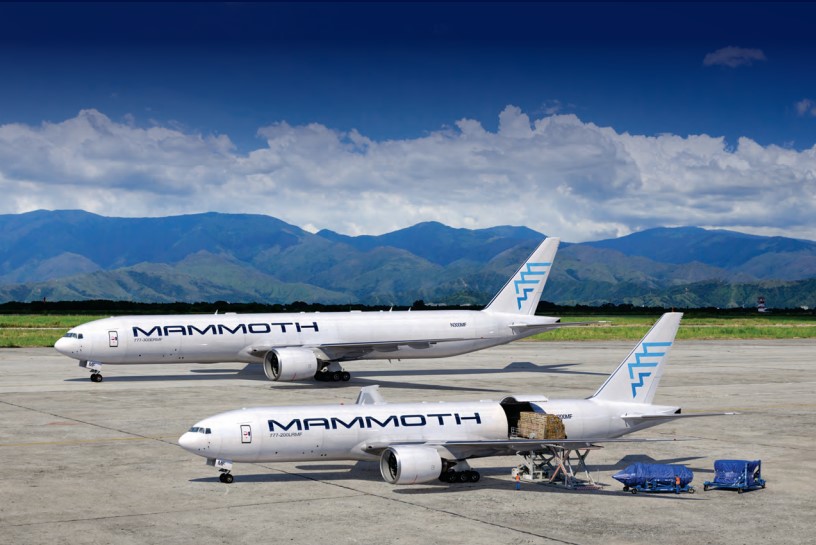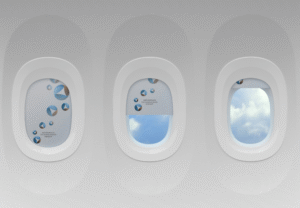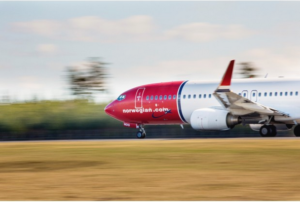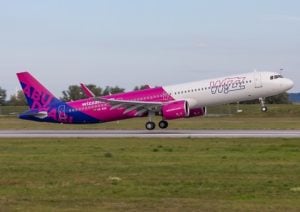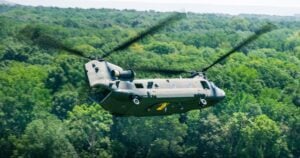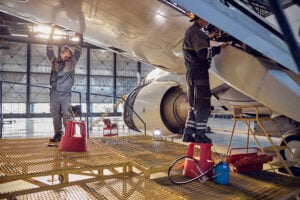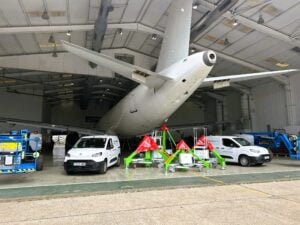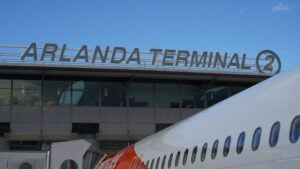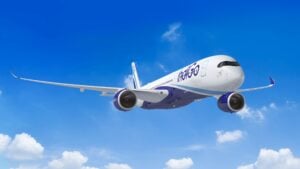Thursday October 23, 2025
Airbus, Leonardo and Thales have signed a memorandum of understanding to merge their space activities into a single company. By joining forces, the three giants aim to bolster Europe’s strategic autonomy in space. This vital sector supports telecommunication...
Read More »Thursday October 23, 2025
Jamco Corporation, a Bain Capital portfolio company and Japan’s top manufacturer of aircraft cabin interiors, has announced the acquisition of Aerospace Technologies Group (ATG) by Bain Capital. The global investment firm manages assets worth around US$185 b...
Read More »Thursday October 23, 2025
Ashland Place Finance (Ashland Place) has completed its third and fourth aircraft financing facilities with affiliates of Fortress Investment Group and GOAL Aircraft Leasing. The deals involve the sale and leaseback of two new Embraer E195-E2 jets, delivered d...
Read More »Thursday October 23, 2025
Lockheed Martin has reported a robust third quarter for 2025, with sales reaching US$18.6 billion, up from US$17.1 billion a year earlier. Net earnings remained steady at US$1.6 billion, or US$6.95 per share, slightly higher than the US$6.80 per share recorded...
Read More »Thursday October 23, 2025
Embraer has begun construction on a new MRO facility for commercial jets at Perot Field Alliance Airport in Fort Worth. The ground-breaking ceremony gathered local leaders, Embraer executives, and partner representatives to celebrate this major step forward. T...
Read More »Thursday October 23, 2025
At a ceremony in Washington, Bell Textron signed key agreements with Ukraine’s Ministry of Economy, Ecology, and Agriculture, and UkraineInvest. The deal aims to explore industrial cooperation as part of a possible purchase of AH-1Z Viper and UH-1Y Venom hel...
Read More »Wednesday October 22, 2025
Elysian, a pioneer in next-generation electric aircraft, has signed a collaboration agreement with regional aircraft lessor TrueNoord. The deal, announced during the European Regions Airline Association (ERA) General Assembly in Estoril, supports Elysian’s f...
Read More »Wednesday October 22, 2025
For the third quarter 2025, the Norwegian Group has posted a profit before tax (EBT) of NOK 2,891 million and an operating profit (EBIT) of NOK 3,071 million. The period also marked key milestones. The company paid its first-ever dividend in August and confirm...
Read More »Wednesday October 22, 2025
Aviation Capital Group LLC (ACG) has delivered three new Airbus A321neo aircraft to Wizz Air. These aircraft are powered by advanced Pratt & Whitney GTF engines, known for their fuel efficiency and lower emissions. They mark the tenth, eleventh and twelfth...
Read More »Wednesday October 22, 2025
The U.S. Army has advanced its heavy-lift modernisation plans with an order for nine Boeing CH-47F Block II Chinook helicopters. The two new contracts, worth US$461 million, bring the total number of Block II aircraft on order to 18. The latest awards, coverin...
Read More »Wednesday October 22, 2025
STS Line Maintenance (STS), part of STS Aviation Group, has opened a new satellite station in Vero Beach, Florida (VRB). Operations will begin on December 1, with JetBlue Airways confirmed as the launch customer. Mark Smith, President of STS Aviation Group, sa...
Read More »Wednesday October 22, 2025
A major deal has been agreed to support a multi-million-pound expansion of aircraft maintenance operations at Teesside International Airport. The move will create hundreds of skilled engineering jobs and boost the region’s growing aviation sector. Willis Avi...
Read More »Wednesday October 22, 2025
BCT Aviation Maintenance, based at East Midlands Airport (EMA), has made a six-figure investment in new hangar tools and airside vehicles. The move prepares the company for a busy winter maintenance season. From October to December, BCT’s hangar will handle ...
Read More »Tuesday October 21, 2025
Korean Air and Archer Aviation (Archer) have signed an agreement to bring Archer’s Midnight eVTOL aircraft to Korea. The rollout will begin with government use and later expand to other sectors. As part of the deal, Korean Air plans to buy up to 100 Midnight...
Read More »Tuesday October 21, 2025
Acron Aviation has announced the acquisition of Honeywell’s Thermal Switches product line. This milestone marks the company’s second acquisition in just six months, following its launch as a standalone business in March 2025. The strategic purchase strengt...
Read More »Tuesday October 21, 2025
Airbus and the Cathay Group (Cathay) have announced a joint investment of up to US$70 million. The goal is to speed up the development of sustainable aviation fuel (SAF) across Asia and beyond. This marks another strong step towards cleaner, lower-carbon air t...
Read More »Tuesday October 21, 2025
TrustFlight, a pioneer in aviation safety and compliance technology, has launched Smart Documents — a next-generation authoring platform that transforms how aviation organisations create, validate, and distribute operational documentation. The launch follows...
Read More »Tuesday October 21, 2025
L3Harris Technologies has secured a major contract to supply modified Bombardier Global 6500 aircraft for the Republic of Korea Air Force. These advanced airborne early warning and control (AEW&C) jets will enhance national defence and surveillance. The pr...
Read More »Tuesday October 21, 2025
Stockholm Arlanda Airport is taking European aviation into a new era. Swedavia and Luftfartsverket have jointly introduced Established on RNP (EoR), a concept that enables aircraft to perform curved approaches more often. It is the first of its kind in Europe,...
Read More »Monday October 20, 2025
IndiGo, India’s largest airline, has finalised a firm order for 30 Airbus A350 aircraft. This deal converts a memorandum of understanding signed in June into a confirmed contract. As a result, IndiGo’s total A350 orders now stand at 60. The agreement marks...
Read More »
